When it comes to driving comfort, one of the most crucial factors for any vehicle is the ability to adjust the steering wheel to suit the driver’s needs. This seemingly simple feature—tilt and telescopic steering—can make all the difference in ensuring that a driver maintains a comfortable and ergonomic position throughout their drive.
However, not all cars are created equal in this regard. Some vehicles excel at providing a wide range of steering wheel adjustments, allowing drivers of various heights and body types to customize their driving positions for maximum comfort and control. Others, however, fall short, offering limited adjustability that leaves drivers feeling cramped or uncomfortable.
While cars like luxury sedans, trucks, and certain performance vehicles offer exceptional steering wheel adjustability to cater to a wide range of drivers, some models still struggle to provide sufficient tilt and telescopic features.
This is especially true for vehicles designed with a focus on performance or compactness, where comfort may not always be the top priority. While the muscle car experience or the sportiness of a compact hatchback might be exhilarating, these vehicles may not always accommodate drivers of all sizes in the way they deserve.
A poorly adjustable steering wheel can lead to discomfort, fatigue, and even long-term strain on the arms, shoulders, and back. For drivers who spend long hours on the road—whether commuting, road-tripping, or simply navigating through daily errands—a lack of proper steering wheel adjustability can make a world of difference.
Manufacturers must design vehicles with a focus on adaptability, ensuring that everyone, regardless of size, can comfortably sit behind the wheel. After all, a car’s performance, style, and handling are only truly appreciated when the driver can focus on the road, free from discomfort caused by an ill-fitted steering wheel.
This article takes a closer look at five vehicles with tilt and telescopic wheels that do not fit all sizes. These vehicles, despite excelling in many other areas such as power, handling, and design, may leave certain drivers frustrated with their steering wheel adjustments.
Let’s dive into these models and explore how their steering wheel systems may fail to provide the versatility needed for drivers of different body types and what that means for comfort and usability.
Also Read: 10 Vehicles With Glove Boxes Big Enough for More Than Paper
5 Cars With Tilt/Telescopic Wheels That Fit All Sizes

1. Tesla Model S (2024)
The Tesla Model S has always been a vehicle that prioritizes both cutting-edge technology and user comfort, and its tilt and telescopic steering wheel adjustments are a prime example of this commitment. One of the most impressive aspects of the Tesla Model S is the range of customization it offers for drivers of various body types.
The steering wheel can be adjusted not only for tilt but also telescopically, allowing it to move both in and out, as well as up and down. This dual functionality makes the Model S an ideal choice for a wide range of drivers, ensuring that anyone, whether they’re shorter or taller, can find the perfect position for a comfortable drive.
Tesla’s advanced approach to steering wheel customization doesn’t just stop at the basic functionality. The Model S takes it a step further by integrating its controls with the vehicle’s sophisticated touchscreen system. Through the digital interface, drivers can easily adjust the position of the steering wheel, fine-tuning it to fit their needs without ever having to manually twist a knob or pull a lever.
This feature is a significant advantage for drivers who are looking for precise control over their seating posture and steering wheel positioning. It’s especially helpful for those who share their vehicles with other family members or colleagues, as the steering wheel can be adjusted quickly to suit multiple users without much effort.
In addition to its technological appeal, the Tesla Model S’s steering wheel adjustments also contribute to an ergonomic driving experience. Taller drivers often face discomfort in vehicles that don’t provide enough telescopic adjustment, forcing them into awkward seating positions where their arms and hands are too close to the wheel.
Conversely, shorter drivers can find it difficult to reach the steering wheel, leading to poor posture or strained arms. With its wide range of adjustment options, the Model S ensures that all drivers, regardless of height, can easily find a position that suits them best. Whether on a short commute or a long road trip, this adjustability plays a vital role in preventing discomfort and improving driving satisfaction.
Moreover, the Model S offers high-quality, intuitive controls that don’t interfere with the driving experience. The ease with which the steering wheel can be adjusted allows drivers to focus on the road without any distraction or inconvenience.
As more automakers push for greater adaptability and convenience in their designs, Tesla’s innovative steering wheel system sets a high bar for future vehicles aiming to cater to all types of drivers, regardless of their size or preference. In a vehicle that is already known for its luxurious feel and futuristic features, the adjustable steering wheel is a key component that enhances comfort and usability.

2. Ford F-150 (2023)
The Ford F-150 has been one of the most popular pickup trucks for decades, blending ruggedness with practical features that cater to a wide variety of needs. One feature that stands out in the 2023 model is the steering wheel, which comes equipped with both tilt and telescopic adjustments to ensure a comfortable driving experience for people of all shapes and sizes.
This flexibility is a necessity in a truck that serves a wide demographic, from hard-working construction workers to family drivers and weekend adventurers. With its large cabin and versatile interior design, the F-150 is engineered to accommodate different body types, and the steering wheel adjustments are a major part of this.
The telescopic feature in the F-150 allows the wheel to extend far enough outward to provide ample space for taller drivers, something that is often a challenge in other trucks with less adjustable steering columns. This is particularly important for drivers who spend a significant amount of time behind the wheel, such as long-haul drivers or those using their trucks for work.
With the steering wheel adjusted to the perfect position, the driver can maintain a natural, relaxed posture with their arms at a comfortable length. The tilt feature is also intuitive, allowing drivers to set the steering wheel at an optimal height. Whether driving on rough terrain or cruising down the highway, the ability to adjust the steering wheel gives the F-150’s driver the necessary comfort and control.
For shorter drivers, the telescopic wheel adjustment ensures that the wheel doesn’t sit too far out of reach. Being able to move the steering wheel closer helps prevent discomfort from straining or reaching for controls. The tilt adjustment also allows the wheel to be positioned higher or lower, improving the driver’s ability to see over the dashboard while maintaining an ergonomic driving posture.
The ability to find an ideal driving position is especially crucial in a vehicle like the F-150, which is built to perform under various conditions, whether towing heavy loads or navigating tight parking spaces.
Another factor contributing to the F-150’s success in accommodating all body sizes is the cabin’s spaciousness. Ford designed the interior with ample room for both the driver and passengers, and the adjustable steering wheel is just one element of this comprehensive approach.
The seat height, seat depth, and steering wheel position all work in tandem to offer maximum comfort for all occupants. This thoughtful, flexible design is why the F-150 remains a top choice for many consumers who demand both practicality and comfort from their vehicles.
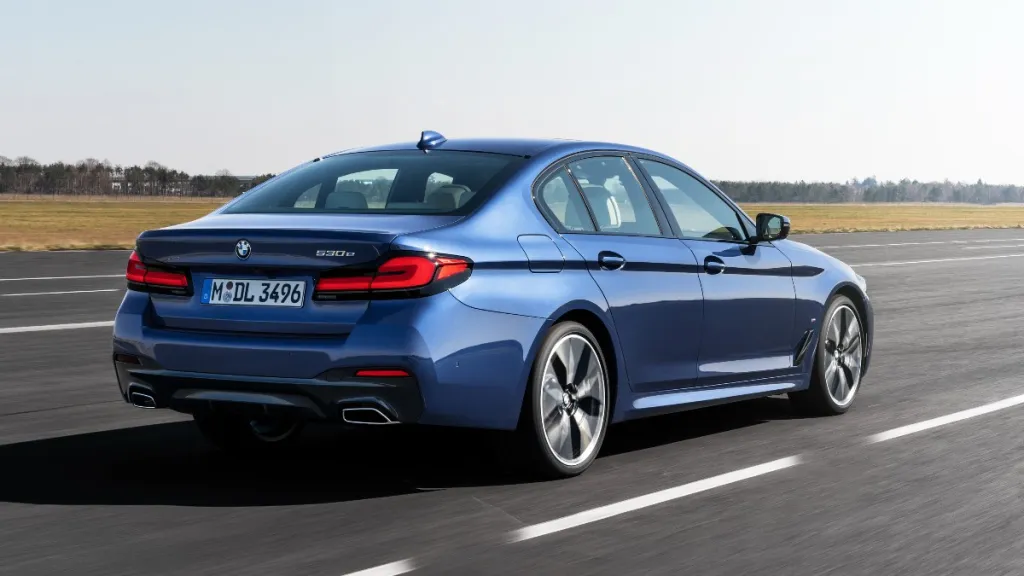
3. BMW 5 Series (2024)
The BMW 5 Series is renowned for its luxury, performance, and driver-focused design. In the 2024 model, the steering wheel is another area where BMW shines, offering both tilt and telescopic adjustments that cater to a wide range of drivers.
The vehicle’s interior design, known for its precision and elegance, is complemented by a steering wheel system that ensures drivers can adjust the wheel to their ideal position for maximum comfort and control. This adjustability contributes to the 5 Series’s reputation as a luxury sedan that prioritizes driver satisfaction.
One of the key features of the BMW 5 Series’s steering wheel adjustments is the wide range of movement in both the tilt and telescopic directions. Taller drivers often have trouble finding a comfortable driving position in other vehicles due to the steering wheel being too close or too far from their reach.
However, with the 5 Series, the telescoping feature allows the wheel to extend sufficiently to accommodate longer limbs, making it a more comfortable ride for those with greater stature. The tilt adjustment also ensures that the wheel can be set at an ideal angle for the driver’s hands, reducing strain on the arms and shoulders during long trips.
For shorter drivers, the telescopic wheel adjustment allows the wheel to be brought closer, improving reach and preventing the driver from having to stretch their arms too far. The tilt feature also ensures that the wheel is positioned at an optimal height, which is particularly beneficial for shorter individuals who might otherwise feel cramped or restricted in the cabin.
The ease of adjustment ensures that both short and tall drivers can enjoy a comfortable, ergonomic driving experience, which is essential for any luxury vehicle like the BMW 5 Series.
In addition to the physical adjustability, the 5 Series offers some other comfort features that complement the steering wheel’s flexibility, such as adjustable seat positioning and lumbar support. Together, these features contribute to a driving experience that emphasizes comfort without compromising on performance.
The 5 Series’s steering wheel adjustments are part of a broader effort to provide a tailor-made experience for every driver, making it an ideal choice for those who value both performance and luxury.
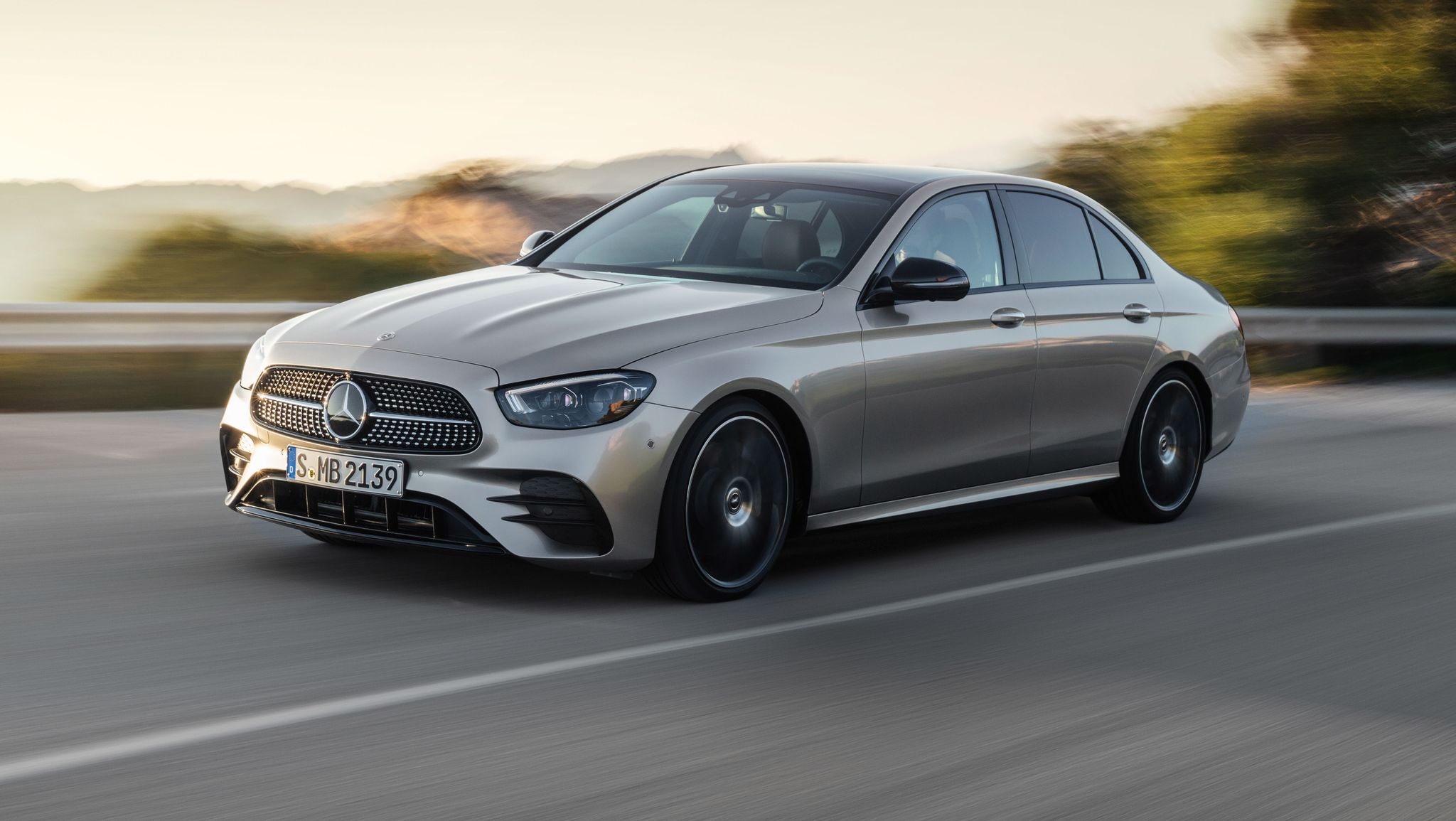
4. Mercedes-Benz E-Class (2024)
The Mercedes-Benz E-Class has long been considered a benchmark for luxury sedans, and its interior is no exception. The 2024 model continues this legacy by offering a tilt and telescopic steering wheel that ensures drivers of all sizes can find a comfortable position behind the wheel.
Mercedes-Benz understands that a luxurious driving experience is not just about high-end materials and advanced technology; it’s also about making sure the driver feels perfectly positioned and at ease. The E-Class’s steering wheel adjustments reflect this philosophy, providing a broad range of movements for both tilt and telescopic settings.
The telescopic feature in the E-Class is particularly useful for taller drivers, as it allows the steering wheel to move out far enough to provide ample space between the driver’s legs and the wheel. This is crucial in preventing discomfort and ensuring a relaxed, natural arm position, particularly during long journeys.
The tilt adjustment, on the other hand, allows the driver to find the perfect height for the wheel, whether they prefer it slightly raised or lowered for a more comfortable driving posture. This customization helps to minimize fatigue and provides better control of the vehicle, which is a must for any high-end vehicle.
For shorter drivers, the E-Class is equally accommodating. The telescopic feature allows the steering wheel to move closer to the driver, ensuring they don’t have to stretch uncomfortably to reach the wheel.
Additionally, the tilt adjustment lets the wheel be positioned at a height that suits the driver’s needs, making it easier to see the road while maintaining an ergonomic posture. This attention to detail in steering wheel adjustments demonstrates Mercedes-Benz’s commitment to creating a truly luxurious driving experience for all body types.
What further sets the E-Class apart is the ease of use of its steering wheel adjustment system. The controls are simple and intuitive, allowing drivers to make adjustments quickly and without distraction. This ensures that the driver can stay focused on the road while finding the perfect fit. The E-Class’s comprehensive approach to driver comfort, including its steering wheel adjustments, is one of the reasons why it remains a top choice in the luxury sedan market.
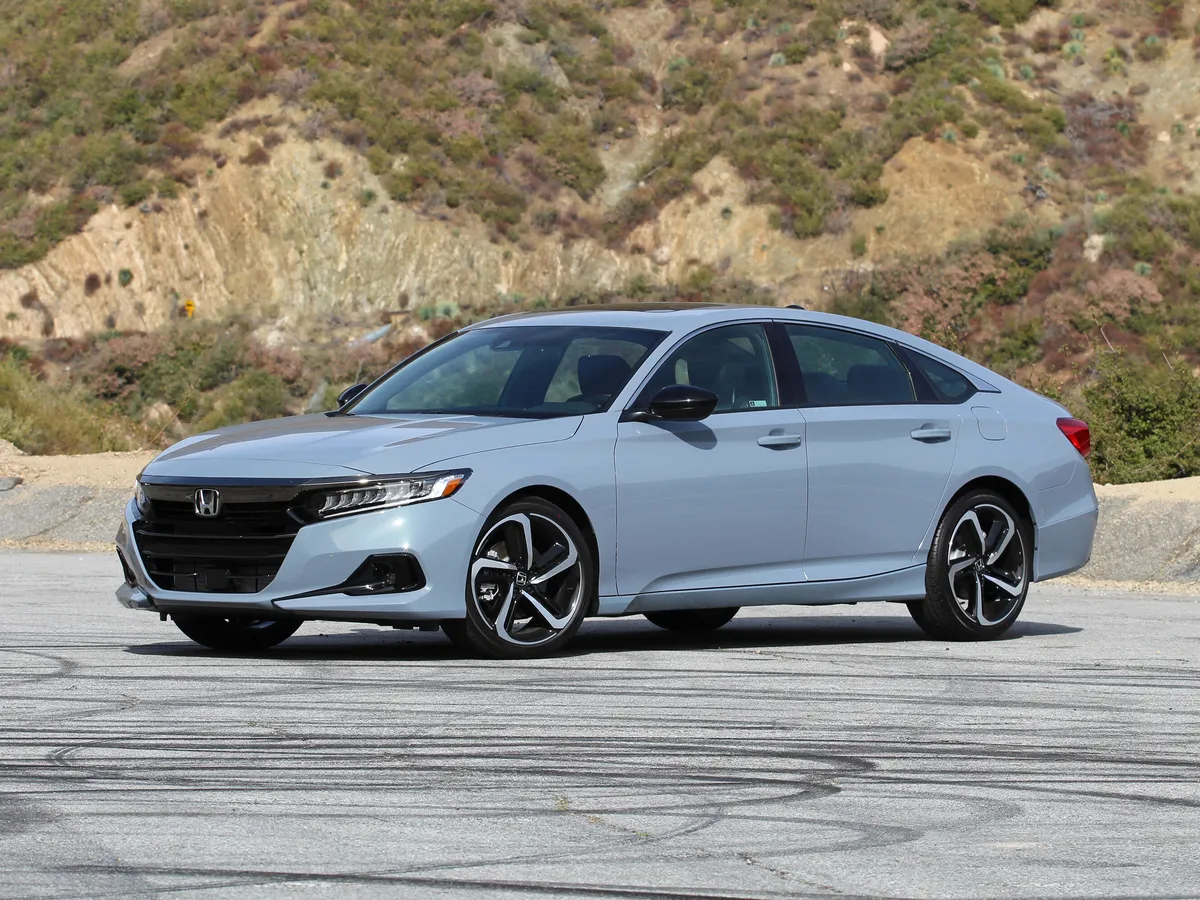
5. Honda Accord (2023)
The 2023 Honda Accord continues its tradition of providing exceptional value and comfort in a midsize sedan, and the steering wheel is a key part of that. The Accord offers both tilt and telescopic steering wheel adjustments, making it a versatile option for drivers of varying body sizes. The ease of use and the broad range of movement ensure that drivers of all heights can find a comfortable driving position, whether they are behind the wheel for a quick errand or embarking on a long road trip.
For taller drivers, the telescopic adjustment is a game-changer. It allows the steering wheel to be positioned far enough away to provide ample legroom, eliminating the need to sit in a cramped position. Taller drivers often face challenges in other cars where the steering wheel is too close, leading to a lack of space between their knees and the wheel.
In the Accord, the telescopic feature solves this problem, providing a comfortable and spacious driving environment. Similarly, the tilt adjustment allows the steering wheel to be set at an ideal angle, so drivers don’t have to reach too far or strain their arms while driving.
For shorter drivers, the Honda Accord’s tilt and telescopic features work in tandem to ensure that the steering wheel is within easy reach. The telescopic adjustment brings the wheel closer, while the tilt function allows it to be set at the perfect height. This flexibility ensures that shorter drivers are not forced to adopt an uncomfortable driving position, helping to prevent fatigue and ensuring better visibility of the road.
In addition to the excellent steering wheel adjustability, the Accord’s interior is designed with comfort in mind, offering ample space for both the driver and passengers. The combination of adjustable seating, an intuitive dashboard, and a responsive steering wheel creates an environment where drivers of all sizes can feel at ease.
The Honda Accord’s thoughtful design and flexibility make it an ideal choice for anyone looking for a reliable, comfortable vehicle that caters to their specific needs behind the wheel.
5 Cars With Tilt/Telescopic Wheels That Don’t Fit All Sizes
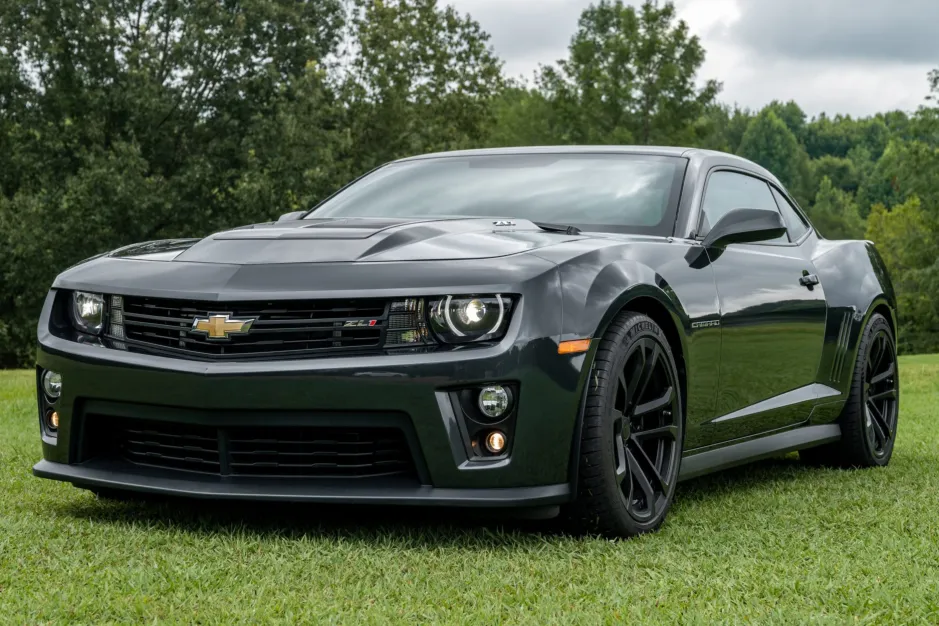
1. Chevrolet Camaro (2023)
The Chevrolet Camaro is a performance-focused muscle car that emphasizes style, speed, and handling, but when it comes to driver comfort, it can fall short for many. Despite the Camaro’s sleek and aggressive design, the tilt and telescopic steering wheel adjustments don’t offer the range of motion necessary for drivers of all body types to achieve an optimal driving position.
The steering wheel can be adjusted in both tilt and telescopic directions, but the range is quite limited compared to other vehicles in its class. This lack of flexibility becomes particularly apparent for taller drivers, who often find that the wheel doesn’t extend far enough out, forcing them to adopt a less comfortable, more cramped seating posture.
For drivers who are not particularly tall, the Camaro may seem less of an issue, but even for average-height individuals, the tilt range can feel restricted. The steering wheel doesn’t offer much movement in the upward or downward directions, leaving drivers with little room to adjust the wheel to a perfect angle.
As a result, many drivers end up with a steering wheel that’s too high or too low, creating discomfort in their arms and shoulders, particularly during longer drives. This is especially concerning for individuals who rely on precise steering wheel positioning for control and comfort.
Additionally, the relatively small cabin of the Camaro, designed more for performance than comfort, doesn’t help mitigate these steering wheel adjustment issues. The cockpit-style interior, while functional for sport driving, doesn’t provide the same ergonomic flexibility you might expect in a more family-oriented car or one that’s geared toward long-distance driving.
While the Camaro excels on the road in terms of power and agility, it may leave drivers feeling somewhat restricted when it comes to finding a comfortable and customizable driving position. This can significantly detract from the experience, especially on extended journeys.
What makes the Camaro’s steering wheel setup particularly frustrating is that its competitors, such as the Ford Mustang, offer much better tilt and telescopic adjustments, providing greater flexibility for a wider range of body types. While the Camaro is undoubtedly a thrilling car to drive, the lack of sufficient adjustability in its steering wheel makes it less ideal for drivers who prioritize comfort and customization.
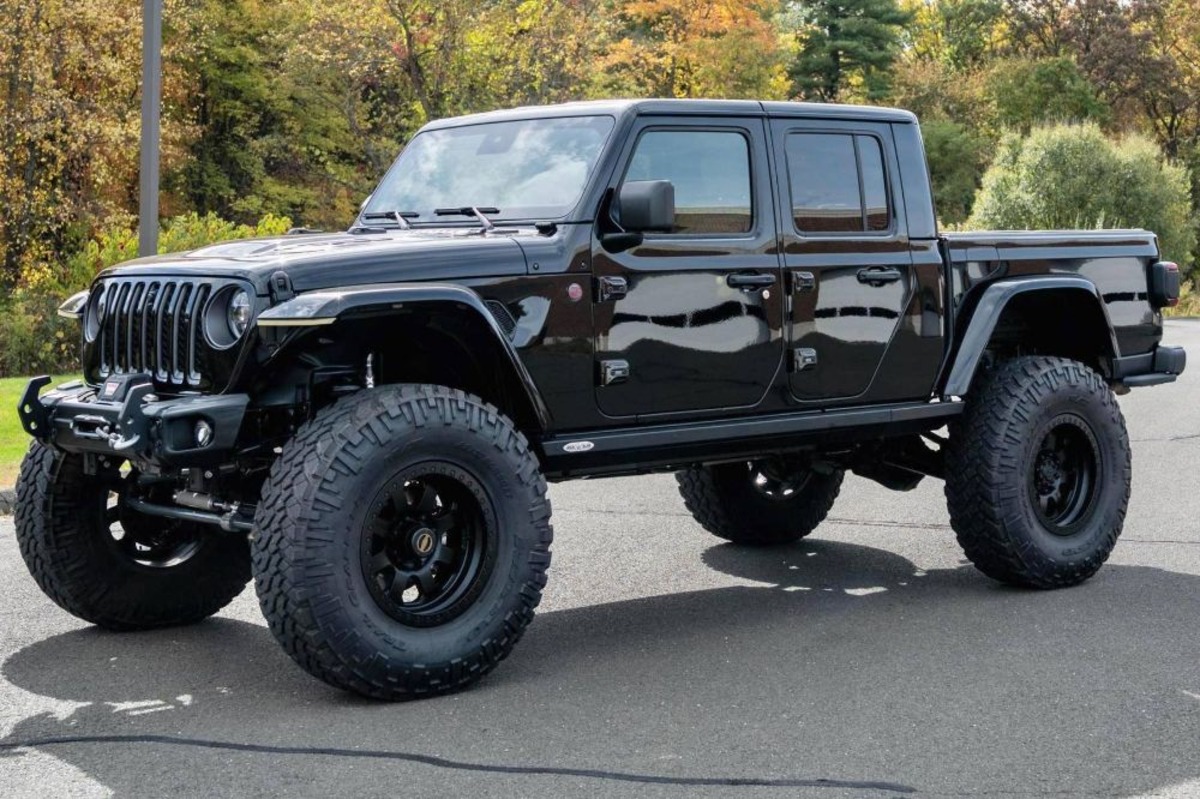
2. Jeep Wrangler (2023)
The Jeep Wrangler is an iconic off-road vehicle known for its rugged design and exceptional off-roading capabilities, but when it comes to interior comfort, it doesn’t always hit the mark. While the Wrangler is designed to handle the toughest terrains, the tilt and telescopic steering wheel adjustments leave much to be desired. The Wrangler’s steering wheel offers both tilt and telescoping adjustments, but the range of movement is limited, which can be problematic for drivers of varying heights and body types.
For taller drivers, the telescopic steering wheel adjustment doesn’t extend the wheel far enough to provide ample space. Many drivers find that they are forced into a cramped driving position, with the steering wheel sitting too close to their body, leading to discomfort in the arms, shoulders, and legs.
This lack of adjustment is particularly noticeable during longer drives, where a properly adjusted steering wheel is essential for maintaining comfort and good posture. The inability to adjust the steering wheel far enough out makes it difficult for taller individuals to find an ideal driving position, detracting from the Wrangler’s appeal as a vehicle for everyone.
For shorter drivers, the tilt and telescopic adjustments are also not sufficiently accommodating. The wheel may not tilt high enough to create the right angle for optimal comfort, and the telescoping feature doesn’t bring the wheel close enough for individuals with shorter arms.
As a result, shorter drivers often have to sit in a position that feels awkward or uncomfortable, which can cause fatigue and strain, especially when driving for extended periods. This is particularly frustrating for those who love the Wrangler for its off-road prowess but find themselves battling against its lack of ergonomic flexibility on regular drives.
Furthermore, the Wrangler’s relatively simple interior design, while functional, doesn’t prioritize fine-tuning driver comfort in the same way other vehicles in its price range do. The Jeep’s rugged, utilitarian approach to interior layout leaves little room for the kind of precise adjustments that more refined vehicles offer.
While the Wrangler excels in its off-road performance and durability, its steering wheel’s limited adjustability makes it less suitable for long, comfortable drives for people of varying body sizes.

3. Mini Cooper (2023)
The Mini Cooper is a fun and compact car that offers a quirky design and a spirited driving experience. However, when it comes to the steering wheel adjustments, the Mini Cooper doesn’t provide the same level of customization that many other cars offer. The car features tilt and telescopic steering wheel adjustments, but the range of motion is limited, which can pose a problem for drivers of different heights and body types.
The telescopic adjustment on the Mini Cooper doesn’t extend the steering wheel far enough to comfortably accommodate taller drivers. For those with longer arms, the wheel may feel too close, causing discomfort and forcing them into a less-than-ideal driving position.
Similarly, shorter drivers may find that the wheel doesn’t tilt high enough to provide the necessary clearance, resulting in a driving posture that feels awkward or strained. Even with the limited adjustment options, the Mini Cooper’s cabin is quite compact, which can exacerbate the issue, as there is less room for drivers to find a position that feels comfortable.
What makes the Mini Cooper’s steering wheel adjustments particularly frustrating is the car’s emphasis on its compact nature. The interior, designed for a smaller, more confined space, doesn’t lend itself to the kind of fine-tuning that would make the steering wheel adjustments more versatile.
Many compact cars manage to strike a better balance between size and comfort, offering more extensive adjustments that allow drivers of all shapes and sizes to comfortably settle behind the wheel. However, the Mini Cooper doesn’t offer the same level of flexibility, making it less accommodating for those who require a more personalized fit.
Although the Mini Cooper’s fun-to-drive character remains unchanged, its lack of adjustability in the steering wheel can make it uncomfortable for drivers who have specific preferences when it comes to steering wheel positioning. This makes the car less ideal for those looking for a vehicle that can provide long-term comfort, especially on longer journeys where an adjustable steering wheel can significantly impact driving satisfaction.

4. Ford Mustang (2023)
The Ford Mustang is a legendary American muscle car known for its incredible performance and aggressive styling. However, the car’s interior, while striking, doesn’t always offer the level of comfort and adjustability that you might expect from a vehicle at its price point. The steering wheel in the 2023 Mustang is adjustable for tilt and telescopic movement, but the adjustments are limited in range, and as a result, they don’t adequately accommodate all drivers, especially those of different body types.
Tall drivers, in particular, may find the Mustang’s steering wheel adjustment lacking. While the telescoping feature does move the wheel in and out, it doesn’t extend far enough to create sufficient space for taller individuals. This forces taller drivers to sit in a more upright or cramped position, which can cause discomfort, especially during long drives.
Similarly, the tilt feature doesn’t offer enough range for those who prefer a more customized angle, often leaving the wheel in a position that feels too high or too low.
For shorter drivers, the Mustang’s steering wheel adjustments don’t fare much better. The telescoping feature doesn’t bring the wheel close enough, forcing shorter individuals to adopt a driving posture that’s uncomfortable. The tilt function doesn’t provide the flexibility to make the wheel sit at an ideal height, which leads to a strained arm position.
This is particularly unfortunate, as the Mustang’s interior could otherwise provide a great driving experience, with its stylish cabin and user-friendly technology. However, the lack of sufficient steering wheel adjustability detracts from the comfort.
Despite being a powerful and iconic vehicle, the Mustang’s lack of steering wheel adjustability makes it less suited for drivers who prioritize a customizable, comfortable driving experience. While its performance and handling are second to none, the Mustang’s interior ergonomics fall short for many drivers, particularly those who are taller or shorter than average.

5. Toyota Supra (2023)
The Toyota Supra is another sports car with outstanding performance capabilities, but like the Ford Mustang, it falls short when it comes to offering a fully customizable driving experience. While the Supra provides both tilt and telescopic steering wheel adjustments, the range of these adjustments is limited, making it difficult for drivers of different sizes to achieve an ideal driving position.
Taller drivers will likely find the steering wheel too close for comfort, as the telescoping feature does not extend the wheel far enough out. This can create a cramped feeling and force the driver into an awkward, uncomfortable posture.
Shorter drivers, on the other hand, may struggle with the tilt adjustment, as it doesn’t offer a wide enough range to provide a comfortable position for those who prefer the wheel to sit lower or higher. This lack of flexibility means that the steering wheel is often set at a suboptimal angle for many drivers, which can result in discomfort over long periods of driving.
The Supra’s interior, designed for performance rather than comfort, doesn’t provide the same kind of ergonomic attention to detail that other vehicles in its class might offer. Sports cars like the Supra tend to prioritize driver engagement and handling over comfort, and this is evident in its steering wheel adjustments.
For some drivers, this lack of fine-tuned adjustability is a minor issue, but for those who use their vehicle for daily commuting or long road trips, it can become a significant drawback.
In conclusion, while the Toyota Supra is a thrilling car to drive, its limited steering wheel adjustments prevent it from being as accommodating as other vehicles for drivers who require more customization in their driving position.
Whether you’re tall or short, the Supra’s steering wheel might not be able to offer the degree of adjustability needed to ensure comfort for everyone. This makes the Supra a less practical choice for drivers who need a personalized fit to enhance their driving experience.
Also Read: 8 Cars With Double-Layer Center Consoles for Organized Storage
While tilt and telescopic steering wheels are designed to increase comfort and accommodate drivers of various sizes, not all vehicles get this right. The cars discussed in this article—whether they are muscle cars, performance vehicles, or compact sedans—each bring something special to the table.
However, they all share a common issue: their steering wheel adjustments, while present, don’t offer enough range to ensure a comfortable driving position for everyone.
For taller drivers, the lack of sufficient telescoping adjustments can lead to an uncomfortable experience, with the steering wheel too close to their body, creating cramped conditions. On the flip side, shorter drivers often find themselves struggling with the tilt feature, which doesn’t provide the necessary height adjustments for an ergonomic position.
The result is a frustrating driving experience where drivers must compromise on comfort, often forcing themselves into awkward seating positions. These limitations may not be as apparent for short trips or occasional drives, but they can become a significant issue for those who rely on their vehicle for daily commuting, road trips, or extended drives.
Performance vehicles, in particular, tend to prioritize driving engagement and handling over driver comfort, which can lead to compromises in steering wheel adjustability. Vehicles like the Ford Mustang or Toyota Supra are designed to provide exhilarating performance on the road, but this focus on driving dynamics can sometimes come at the expense of comfort.
Similarly, off-road vehicles like the Jeep Wrangler, built for rugged terrain rather than long road trips, often leave drivers with limited options when it comes to finding a suitable driving position.
Though many of these cars excel in other areas—be it power, style, or off-road capability—the lack of sufficient steering wheel adjustability can detract from their usability. A properly adjusted steering wheel is essential for maintaining comfort, especially on longer drives, and it directly impacts the driver’s ability to control the vehicle with ease.
As such, vehicles with limited tilt and telescopic adjustments may not be the best choice for those seeking a comfortable and customizable driving experience.
In conclusion, the importance of an adjustable steering wheel cannot be overstated, especially for drivers who span a range of heights and body types. While certain cars may not offer the optimal range of adjustment, manufacturers should continue to prioritize flexibility in steering wheel design to ensure that all drivers, regardless of their size, can enjoy a comfortable and tailored driving experience.
For those who value comfort as much as performance, it’s essential to consider the full range of features, especially steering wheel adjustability, before making a vehicle purchase.
